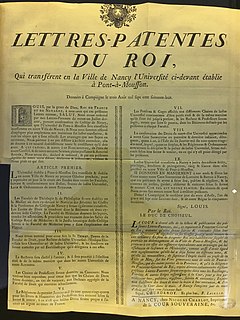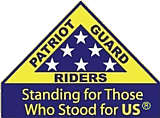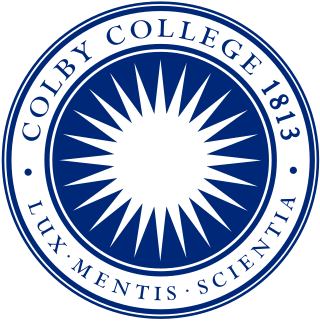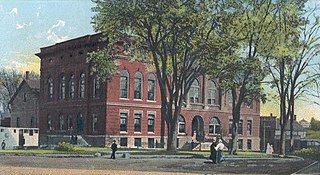
Letters patent are a type of legal instrument in the form of a published written order issued by a monarch, president, or other head of state, generally granting an office, right, monopoly, title, or status to a person or corporation. Letters patent can be used for the creation of corporations or government offices, or for the granting of city status or a coat of arms. Letters patent are issued for the appointment of representatives of the Crown, such as governors and governors-general of Commonwealth realms, as well as appointing a Royal Commission. In the United Kingdom they are also issued for the creation of peers of the realm. A particular form of letters patent has evolved into the modern patent granting exclusive rights in an invention. In this case it is essential that the written grant should be in the form of a public document so other inventors can consult it to avoid infringement and also to understand how to "practice" the invention, i.e., put it into practical use.

A generic trademark, also known as a genericized trademark or proprietary eponym, is a trademark or brand name that, due to its popularity or significance, has become the generic name for, or synonymous with, a general class of product or service, usually against the intentions of the trademark's holder. The process of a product's name becoming genericized is known as genericide.

The Seal of the State of Colorado is an adaptation of the territorial seal which was adopted by the First Territorial Assembly on November 6, 1861. The only changes made to the territorial seal design being the substitution of the words, "State of Colorado" and the figures "1876" for the corresponding inscriptions on the territorial seal. The first General Assembly of the State of Colorado approved the adoption of the state seal on March 15, 1877. The Colorado Secretary of State alone is authorized to affix the Great Seal of Colorado to any document whatsoever.

A sealed crustless sandwich is a foodstuff comprising a filling sealed between two layers of bread by a crimped edge, with the crust subsequently removed. A popular variety in the United States is peanut butter and jelly. Sealed crustless sandwiches are mass-produced by The J. M. Smucker Company under the brand name "Uncrustables".
A land patent is an exclusive land grant made by a sovereign entity with respect to a particular tract of land. To make such a grant "patent", a sovereign must document the land grant, securely sign and seal the document (patent), and openly publish the documents for the public to see. An official land patent is the highest evidence of right, title, and interest to a defined area. It is usually granted by a central, federal, or state government to an individual or to a private company.

In the United States, a design patent is a form of legal protection granted to the ornamental design of a functional item. Design patents are a type of industrial design right. Ornamental designs of jewelry, furniture, beverage containers and computer icons are examples of objects that are covered by design patents.

A Mason jar, named after John Landis Mason who first invented and patented it in 1858, is a molded glass jar used in home canning to preserve food. The jar's mouth has a screw thread on its outer perimeter to accept a metal ring. The band, when screwed down, presses a separate stamped tin-plated steel disc-shaped lid against the jar's rim. An integral rubber ring on the underside of the lid creates a hermetic seal. The bands and lids usually come with new jars, but they are also sold separately. While the bands are reusable, the lids are intended for single use when canning. Largely supplanted by other products and methods for commercial canning, such as tin cans and plastic containers, glass jars and metal lids are still commonly used in home canning. Mason jars are also called Ball jars, in reference to the Ball Corporation, an early and prolific manufacturer of glass canning jars; fruit jars for a common content; and glass canning jars a generic term reflecting their material and purpose. Lightning fruit jars, another type of Mason jar, were not as common as the screw-thread version, but they were popular for home canning in the late nineteenth (19th) and early twentieth (20th) centuries.

The Great Seal of the State of Maine was adopted in June 1820. There have been variations in the details of the seal, but the overall design and images remain true to the original. The center of the seal is a shield adorned with a tranquil scene of a moose resting in a field bordered by water and woods; a pine tree stands tall directly behind the moose. On either side of the shield, a farmer rests on his scythe, and a sailor leans on an anchor. Above the shield is the motto "Dirigo" and a stylized North Star. Below the shield is a banner that reads "Maine". The legislature of 1919 decided that the design of the seal should no longer vary, and the design is still used today.

The Patriot Guard Riders (PGR) is an organization based in the United States whose members attend the funerals of members of the U.S. military and first responders at the invitation of a decedent's family.

Scho-Ka-Kola is a German brand of bitter-sweet dark chocolate consumed for its strong caffeine and kola nut mix. The chocolates have a caffeine content of about 0.2 percent, which is derived from the cocoa content of 58 percent and the addition of 2.6 percent roast coffee and 1.6 percent kola nut. The chocolate is divided into wedges held in a round metal canister. The red-and-white container design and recipe have changed very little since the original launch in 1936.

Dreffa makes Swiss watches. The name is a trademark owned by TGX Holdings.
"I've fallen, and I can't get up!" is a famous catchphrase of the late 1980s and early 1990s popular culture based upon a line from a United States-based television commercial.
Glider, also known as WoWGlider or MMOGlider, was a bot created by MDY Industries, which interoperated with World of Warcraft. Glider automated and simplified actions by the user through the use of scripting to perform repetitive tasks while the user was away from the computer. This allowed the user to acquire in-game currency and level-ups of the character without being present to perform the required actions. As of 2008, it had sold approximately 100,000 copies. Glider was ultimately discontinued after a lawsuit was filed against MDY Industries by Blizzard Entertainment.

A trademark, trade mark, or trade-mark is a recognizable sign, design, or expression which identifies products or services of a particular source from those of others, although trademarks used to identify services are usually called service marks. The trademark owner can be an individual, business organization, or any legal entity. A trademark may be located on a package, a label, a voucher, or on the product itself. For the sake of corporate identity, trademarks are often displayed on company buildings.

The Secretary of State of Kentucky is one of the constitutional officers of the U.S. state of Kentucky. It is now an elected office, but was an appointed office prior to 1891. The current Secretary of State is Democrat Alison Lundergan Grimes, who was elected to her first term on 8 November 2011; she took office on 2 January 2012 and was reelected on 3 November 2015.
Killing Day was a cancelled first-person shooter video game that was being developed for the PlayStation 3. The game was first revealed during Sony's E3 press conference in 2005. It was originally due to release on Q4 2006. However, since then the game was subsequently cancelled on early development, although at an undetermined time. It was announced as cancelled by Jan Sanghera of Ubisoft UK, saying '"Killing Day" has been cancelled and is no longer part of the Ubisoft Portfolio.' On January 4, 2013, a new trademark application was filed but there have been no new comments by Ubisoft, but this very same trademark was abandoned on August 29th, 2016. Its trademark history has been active, with two initial filings in April 8th, 2005, with one abandoned in September 22nd, 2007 and the other by June 22nd, 2009. Other two were filed in February 23rd, 2007, but abandoned in December 15th, 2008, and the other in February 27th, 2007, and abandoned on December 13th, 2010. In May 20th, 2009, another trademark on Killing Day was filed, sparking rumors that the game is still in development, however, this trademark was abandoned on June 11th, 2012. This, alongside the 2013 filing, were the main two noted trademarks to cause rumors of its development and persistent existence, but developer and publisher Ubisoft hasn't commented on any of the trademark filings or the game itself ever since it was cancelled. As of November 2018, no news of the game's development and/or status has been revealed, and all of the known trademarks have been abandoned, and the latest official statement was the one given about its then status as cancelled.

The coat of arms of Albany, New York, is the heraldic symbol representing the city of Albany, the capital of the U.S. state of New York. The coat of arms is rarely seen by itself; it is almost always used in the city seal or on the city flag. The current coat of arms was adopted in 1789, although prior to that it was significantly simpler, ranging from stylized lettering to a caricature of a beaver. Included in the coat of arms are references to Albany's agricultural and fur-trading past. It is supported by a white man and an American Indian and is crested by a sloop. The coat of arms is meant to represent the "symbols of industry and its rewards to man and beast on land and sea".
Typefaces, fonts, and their glyphs raise intellectual property considerations in copyright, trademark, design patent, and related laws. The copyright status of a typeface—and any font file that describes it digitally—varies between jurisdictions. In the United States, the shapes of typefaces are not eligible for copyright, though the shapes may be protected by design patent. Typefaces can be protected in other countries, including the UK, Germany, and France, by industrial design protections that are similar to copyright or design patent in that they protect the abstract shapes. Additionally, in the US and in some other countries, computer fonts—the digital instantiation of the shapes as vector outlines—may be protected by copyright on the computer code that produces them. The name of a typeface may also be protected as a trademark.

The Colby Echo, established in 1877, is the weekly student newspaper of Colby College in Waterville, Maine.


























